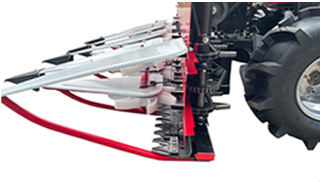Oct . 30, 2024 20:02 Back to list
brake drum assembly
Brake Drum Assembly An Essential Component in Automotive Safety
The brake drum assembly is a critical component in the braking system of many vehicles, particularly those that utilize drum brakes. Understanding its function and the importance of maintenance can greatly enhance safety and performance.
What Is a Brake Drum Assembly?
A brake drum assembly primarily consists of a hollow, cylindrical drum that is mounted on the wheel hub. Inside the drum, brake shoes are positioned. These shoes are equipped with friction material that presses against the inner surface of the drum when the brakes are applied. This pressure generates friction, which slows down or stops the vehicle. The components of a brake drum assembly typically include the drum, brake shoes, springs, and sometimes an adjuster mechanism.
How It Works
The functionality of the brake drum assembly relies on the principles of friction. When the driver presses the brake pedal, hydraulic forces are transmitted through the brake lines to the wheel cylinder located within the drum assembly. This action pushes the brake shoes outward against the inner surface of the drum. The resulting friction slows the drum’s rotation, effectively slowing down the vehicle.
Drum brakes are often favored in certain vehicle designs because they can provide better stopping power and are less prone to fade under prolonged use compared to disc brakes. They are particularly effective in heavier vehicles, such as trucks and buses, where substantial stopping power is crucial.
Maintenance and Common Issues
brake drum assembly

While brake drum assemblies are durable, they require regular maintenance to function effectively. Key aspects of maintenance include inspecting the drum for wear, examining the brake shoes for proper thickness, and ensuring all components, such as springs and adjusters, are in good condition.
One common issue faced by brake drum assemblies is overheating. Prolonged use or aggressive braking can cause the drum to overheat, which may lead to brake fade—a significant reduction in stopping power. Warping of the drum is another issue that can occur as a result of excessive heat. Drivers may notice a pulsating feeling in the brake pedal, which is a sign that the drums may need to be resurfaced or replaced.
Another potential problem is uneven wear of the brake shoes, which can lead to poor braking performance. Regular inspections can help identify wear patterns and ensure that the brake shoes are adjusted properly.
Modern Advances
With advancements in automotive technology, modern brake drum assemblies may include enhanced features such as self-adjusting mechanisms and improved materials for the friction lining. These innovations aim to optimize performance and durability, providing a safer driving experience.
Conclusion
In summary, the brake drum assembly is an essential component of many vehicles' braking systems. Understanding its functionality and upkeep can help drivers ensure their safety on the road. Regular inspections and timely maintenance can prevent issues such as brake fade and uneven wear, ultimately leading to a more efficient and reliable braking system. As automotive technology continues to advance, brake drum assemblies are likely to evolve, offering improved performance and safety features for all drivers.
-
ROR Web Development: Build Fast, Scalable, Secure Apps
NewsAug.17,2025
-
Scania Brake Drums: OEM Quality for Optimal Safety & Durability
NewsAug.16,2025
-
R.V.I: Advanced Remote Visual Inspection for Precision
NewsAug.15,2025
-
Discover HYUNDA: Innovative Vehicles, Equipment & Solutions
NewsAug.14,2025
-
R.V.I: Unlock Advanced Insights & Real-time Performance
NewsAug.13,2025
-
Kamaz Brake Drum: Durable & Reliable for Heavy Duty Trucks
NewsAug.12,2025
